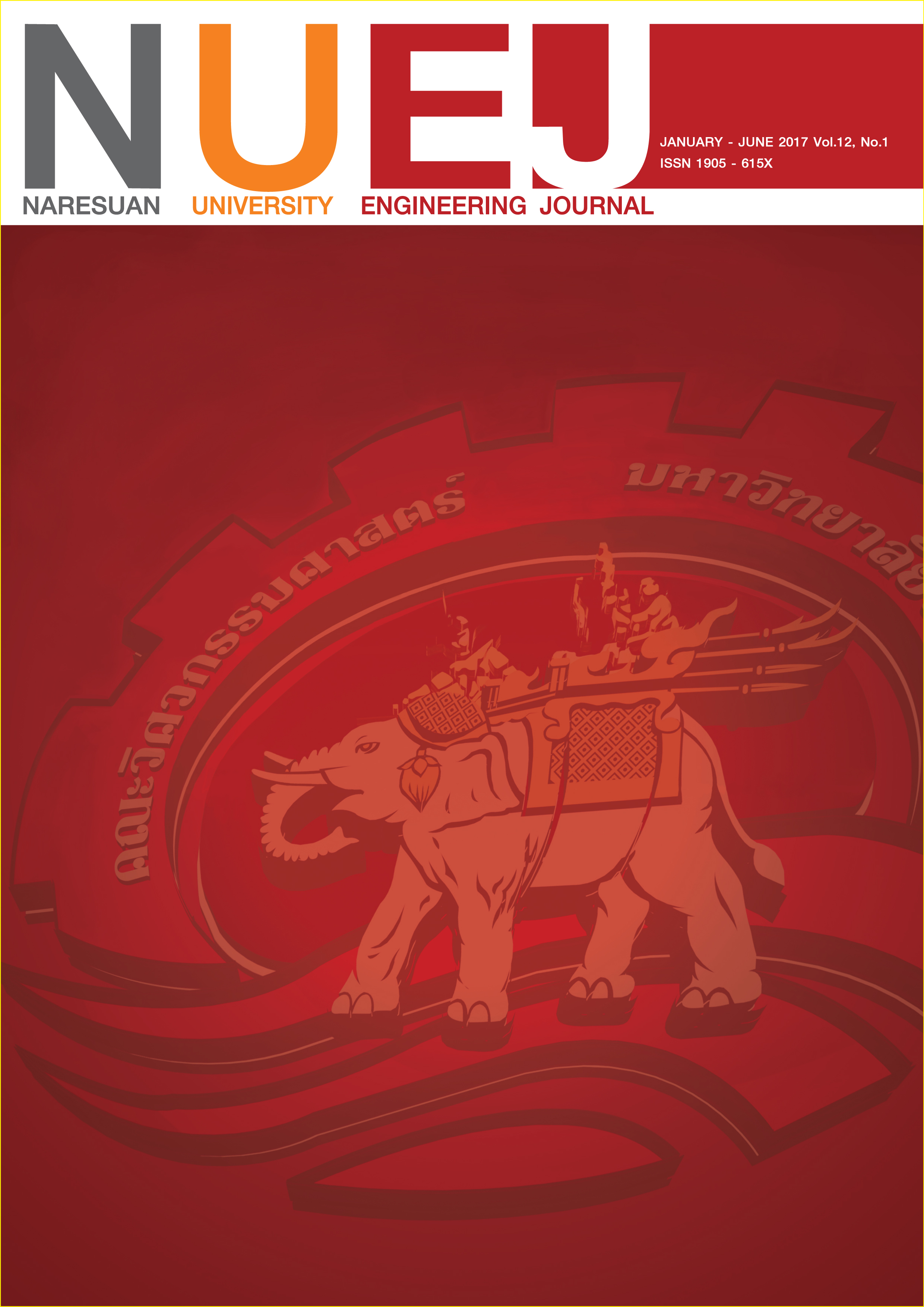Comparison of surface roughness of drawbead on non symmetry deep drawing of sheet metal by using finite element simulation
Main Article Content
Abstract
This research aims to study the flow of sheet metal in non symmetry shape deep drawing process. The experiment used different surface roughness of drawbeads and then they were simulated by finite element method. The shape of drawbeads is semicircle with 3 levels of surface roughness--0.152 Ra, 0.963 Ra and 6.127 Ra. The material used was cold rolled steel SPCD (JIS) which was under the condition of using 50 percent of blank holder force from calculation. The results show that the surface roughness of drawbeads effect the flow of sheet metal. Drawbeads with high surface roughness results in increase of tare and wrinkle on workpiece. While those with low surface roughness results in no tare and less wrinkle. Finite element simulation and experiment show a coherent result in the behavior of non symmetry shape deep drawing process. Additionally, finite element simulation can show the area with tare and wrinkle of workpiece. The adaptation of finite element can effectively predict and provide a way to fix the flow of deep drawing process.
Article Details
References
Murali, A., Gopal, B., Rajadurai, C. (2010). Analysis of Influence of Draw Bead Location and Profile in Hemispherical Cup Forming. Journal of Engineering and Technology, 2(4), 1793-8236.
Schuler GmbH. (1998). Metal Forming Handbook. Springer-Verlag Berlin Heidelberg New York.
Meinders, V.T. (2000). Developments in numerical simulations of the real-life deep drawing process. PhD thesis, University of Twente.
Ma, W.Y., Wang, B., Fu, L., Zhou, j., Huang, M. (2015). Effect of friction coefficient in deep drawing of AA6111 sheet at elevated temperatures. Trans. Nonferrous Met. Soc. China., 25, 2342-2351.
Zhang, S., Hodgson, P.D., Cardew-Hall, M.J. (2003). A finite element simulation of micro-mechanical frictional behaviour in metal forming. Journal of Materials Processing Technology, 34, 81-91.
Hsu, T.C., Yang, T.S. (2001). The Computer Simulation of Tribological Influence on Strain Path and Forming Limit in Punch Stretching of Sheet Metal. Advanced Manufacturing Technology, 7, 393-399.
Wilson, W.R.D., Huang, X.B., Hsu, T.C. (1995). A realistic friction model for computer simulation of sheet metal forming processe. Journal of Engineering for Industry, 117, 202–209.
Wiklunda, D., Rosén, BG., Wihlborg, A. (2009). A friction model evaluated with results from a bending-under-tension test. Tribology International, 42(10), 1448-1452.
Padmanabhan, R., Oliveira, M.C., Alves, J.L., Menezes, L.F. (2007). Influence of process parameters on the deep drawing of stainless steel. Finite Element in Analysis and Design, 43, 1062-1067.
Wongkalasin, K., Piyasin S. (2009) A Study of Deep Draw process of Titanium sheet by finite element method and experimental method. The 23rd Conference of the Mechanical Engineering Network of Thailand.
Meinders, T., Carleer, B.D., Geijselaers, H.J.M., Huétink, J. (1998). The implementation of an Equivalent Drawbead model in a finite Element code for sheet model forming. Journal of material processing Technology, 83 (1–3), 234-244.
Samuel, M. (2002). Influence of drawbead geometry on sheet metal forming. Journal of Materials Processing Technology, 22(1), 94-103.
Trzepiecin´ski, T., Lemu, H.G. (2014). Frictional Conditions of AA5251 Aluminium Alloy Sheets Using Drawbead Simulator Tests and Numerical Methods. Journal of Mechanical Engineering, 60, 51-60.
Hol, J., Cid Alfaro, M.V., de Rooij, M.B., Meinders, T. (2012). Advanced friction modeling for sheet metal forming. Wear 286– 287, 66– 78
Karnchanaseangthong, T., Inpunyo, C., Torsakul. S. (2016). A Study of the Effect of Drawbead Shapes in Non-Symmetry Deep Drawing Process by Using Finite Element-Simulation. IE Network Conference 2016 Thailand. pp.192
ASTM E517. (1993). Standard Test Method for Plastic Strain Ratio r for Sheet Metal. 1993 Annual Book of ASTM Standard, vol.3.01, Mechanical Testing. American Society for Testing of Material.
ASTM E 646-91. (1993). Standard Test Method for Tensile Strain-Hardening Exponent (n value) of Metallic Sheet Materials. 1993 Annual Book of ASTM Standard, vol.3.01, Mechanical Testing. American Society for Testing of Material.


